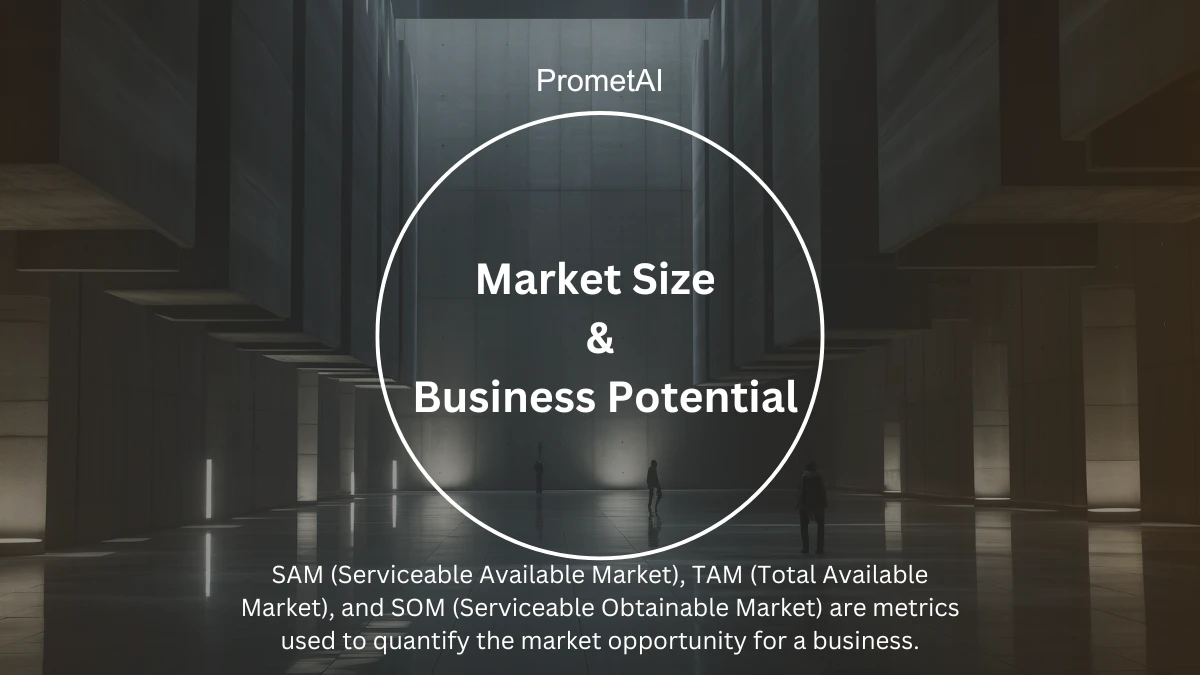Market size measures the total demand for a product or service. It shows potential revenue opportunities. Understanding market size helps businesses plan for growth. It guides marketing and sales strategies. Estimating market size involves analyzing industry data and trends. Accurate market size insights attract investors and support strategic decisions.
How to Calculate Market Size?
Market size calculation involves estimating total demand for a product or service. First, identify your target audience. Next, analyze industry reports and market research data. Calculate potential sales based on customer numbers and average purchase value. Adjust for market trends and economic factors. Accurate market size calculation supports informed business decisions and strategic planning.
Market Sizing Terms
There are several key terms in market sizing: Total Available Market (TAM), Serviceable Available Market (SAM), and Serviceable Obtainable Market (SOM).
SAM
Serviceable Available Market (SAM) is the part of TAM your business can reach. It accounts for geographical, regulatory, and product-specific constraints. SAM focuses on the target market for your products and services.
TAM
Total Available Market (TAM) represents the maximum market demand for a product or service. It measures the total revenue opportunity if a business captured 100% market share. TAM provides a broad view of potential market size.
SOM
Serviceable Obtainable Market (SOM) is the portion of SAM your business can realistically capture. It considers current competition and market conditions. SOM is a practical goal for short-to-medium term growth.
How to Measure Business Potential?
Measuring business potential involves evaluating market demand and growth opportunities. Analyze customer needs and preferences. Assess competitors and market trends for insights. Use financial projections to estimate future revenue. Regularly review and update your business potential measurements.
Importance of Measuring Business Potential
Measuring business potential helps set realistic growth goals. It guides strategic planning and investment decisions. Accurate measurements attract investors and build confidence. Understanding potential aids in resource allocation. It supports long-term business sustainability and success.
Market Size vs. Market Value
Market size measures total demand for a product or service. Market value reflects the current worth of that market. Market size focuses on potential revenue, while market value considers economic conditions. Understanding both helps in strategic planning and investment. Accurate data on market size and value guides business decisions effectively.
